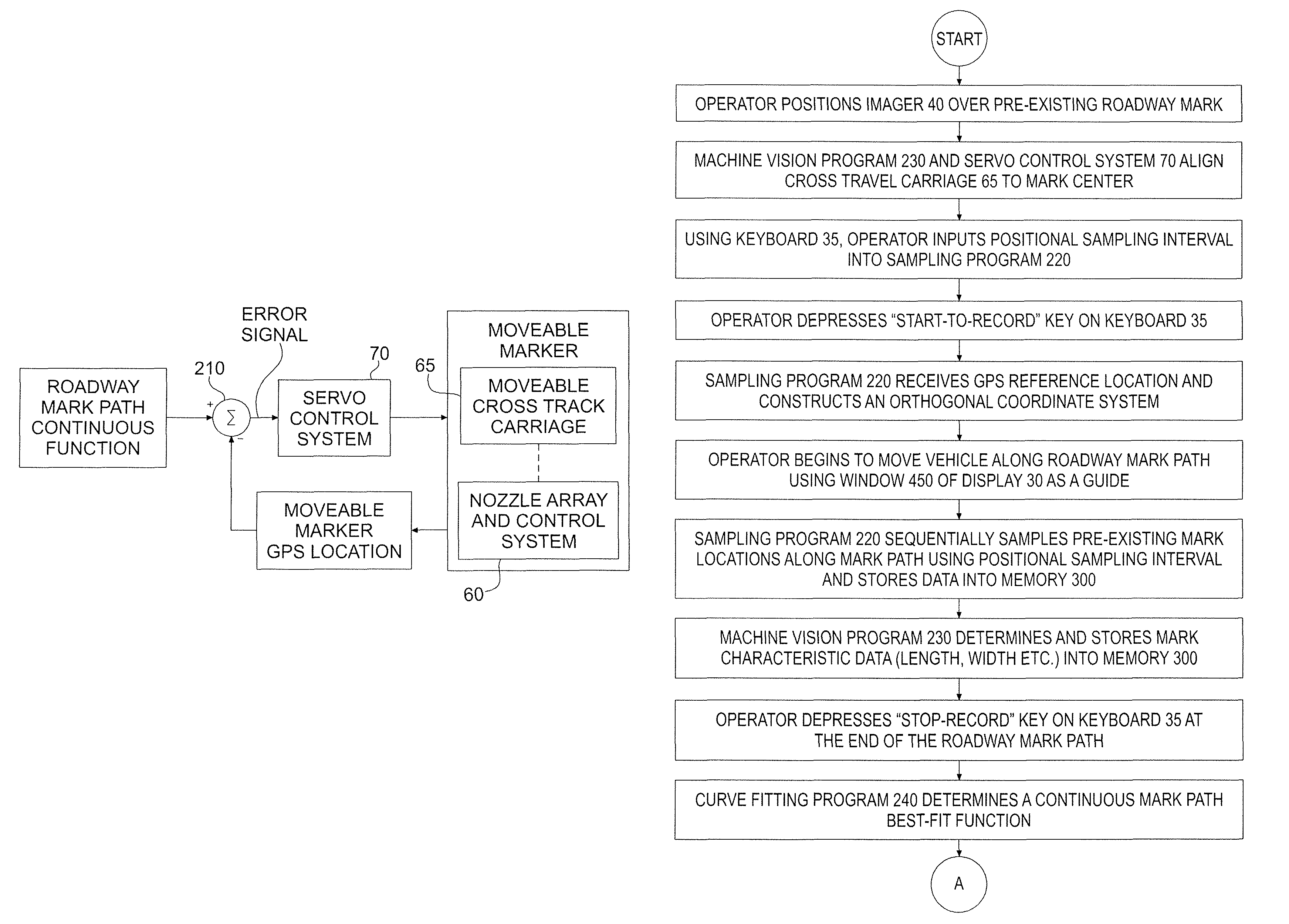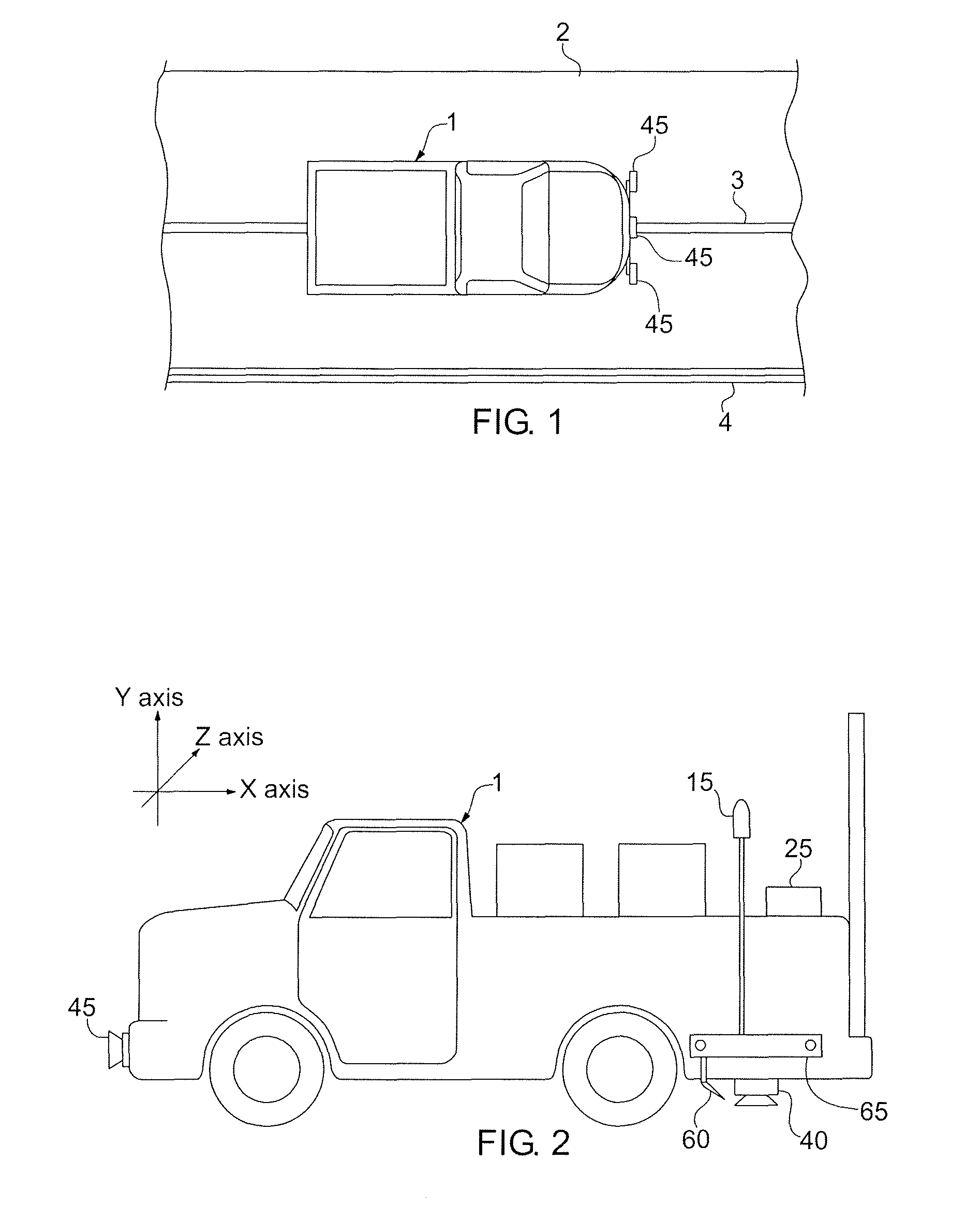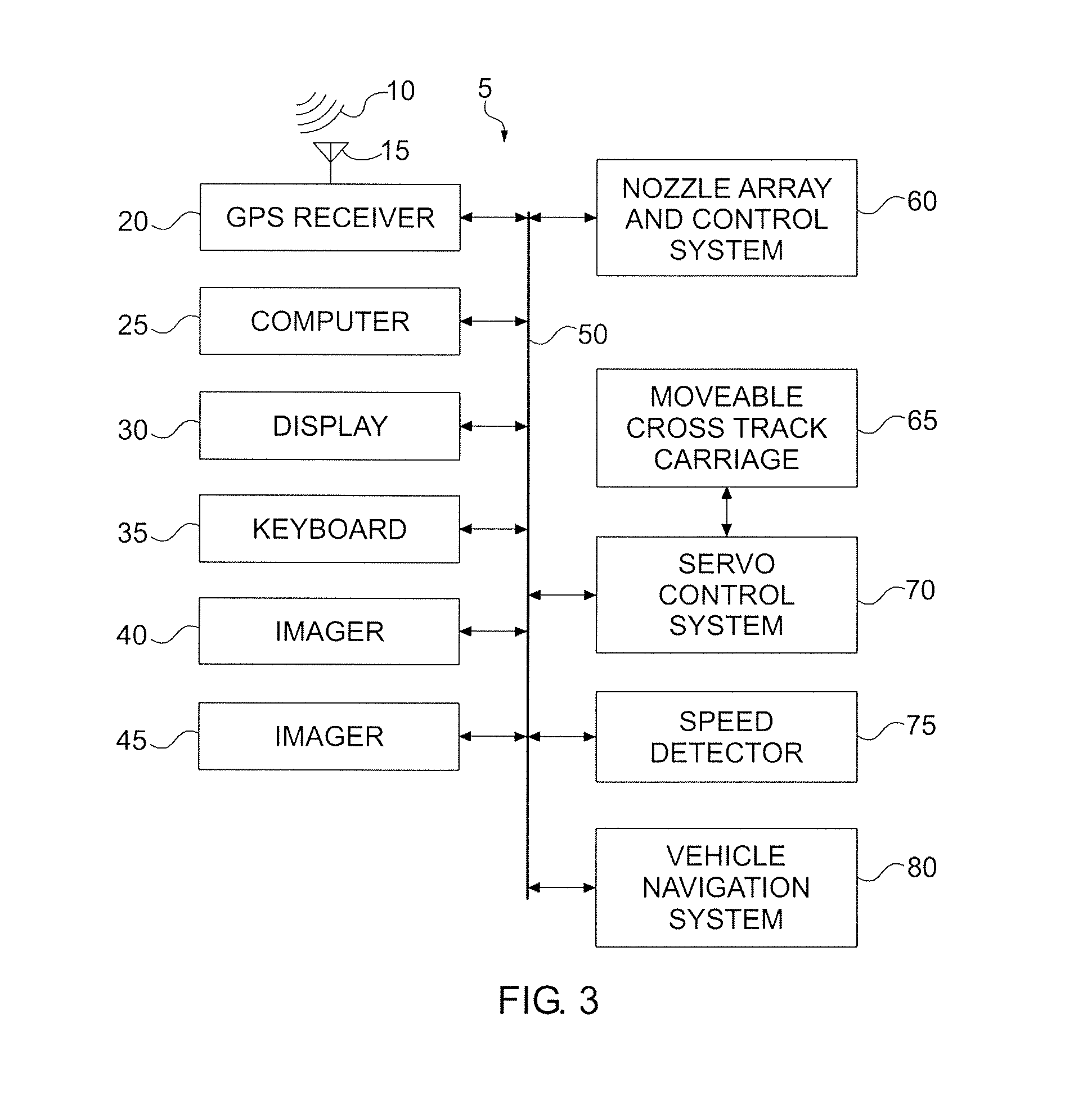Global positioning system roadway marker
- Summary
- Abstract
- Description
- Claims
- Application Information
AI Technical Summary
Benefits of technology
Problems solved by technology
Method used
Image
Examples
Embodiment Construction
[0049]Referring now to the drawing, in which like reference numbers refer to like elements throughout the various figures that comprise the drawing, FIG. 1 shows a self-propelled vehicle 1 which is located on a road 2 near a line 3 applied to the surface of the road 2. Also shown is a roadway edge boundary line 4. The term “vehicle” is given its broadest meaning, including any conveyance, motorized device, or moving piece of mechanical equipment for transporting passengers or apparatus. More specific and preferred examples of vehicles are trucks, snow plows, and road marking machines.
[0050]As illustrated in FIG. 2, the vehicle 1 is fitted with a number of components. Specifically illustrated in FIG. 2 are a GPS antenna 15, a computer 25, a first imager 40, a second imager 45, a nozzle array and control system 60, and a moveable cross track carriage 65. FIG. 1 shows that the vehicle 1 may be fitted with any number of second imagers 45 (three are shown).
[0051]FIG. 3 is a schematic blo...
PUM
 Login to View More
Login to View More Abstract
Description
Claims
Application Information
 Login to View More
Login to View More - R&D
- Intellectual Property
- Life Sciences
- Materials
- Tech Scout
- Unparalleled Data Quality
- Higher Quality Content
- 60% Fewer Hallucinations
Browse by: Latest US Patents, China's latest patents, Technical Efficacy Thesaurus, Application Domain, Technology Topic, Popular Technical Reports.
© 2025 PatSnap. All rights reserved.Legal|Privacy policy|Modern Slavery Act Transparency Statement|Sitemap|About US| Contact US: help@patsnap.com



